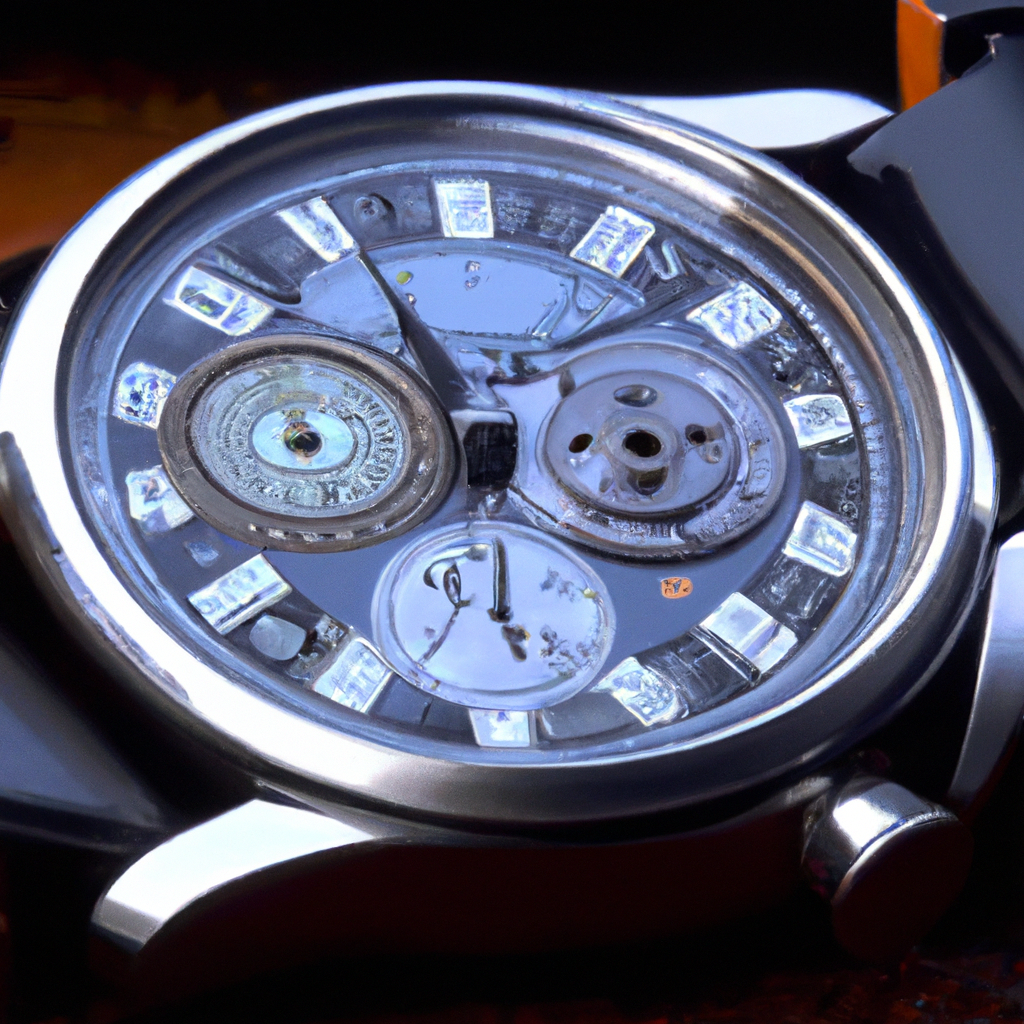A mechanical watch is a timepiece that uses a mechanical mechanism to measure time. It is an intricate piece of engineering that operates through the coordinated movements of various watch parts. Its function is based on the principles of physics and mechanics, and it is a testament to the ingenuity of human technology.
Watch Mechanism
The mechanism of a mechanical watch consists of a series of interconnected parts that work together to keep time. These parts include the mainspring, the balance wheel, the escapement, the gear train, and the hands. The mainspring is the source of power for the watch, and it is wound up manually or through the use of an automatic winding mechanism. The balance wheel is the component that oscillates back and forth, allowing the watch to keep time accurately. The escapement is the mechanism that regulates the movement of the balance wheel, and it is responsible for the familiar ticking sound of a mechanical watch. The gear train is a series of gears that transfer the energy from the mainspring to the balance wheel, and it controls the speed of the watch’s movement. Finally, the hands are the visible components of the watch that display the time to the user.
Watch Movements
There are two main types of watch movements in mechanical watches: manual and automatic. Manual movements require the user to wind the watch manually, whereas automatic movements use the motion of the wearer’s wrist to wind the watch automatically. Automatic movements are more convenient, as they do not require the user to remember to wind the watch. However, manual movements are often preferred by watch enthusiasts, as they offer a more direct connection to the watch’s mechanism.
Watch Gears
Gears are a central component of the watch mechanism, and they are responsible for transferring power and controlling the movement of the watch. The gear train consists of a series of gears that work together to transfer the energy from the mainspring to the balance wheel. The size and shape of the gears are carefully calculated to ensure that the watch keeps time accurately. The gears are also responsible for controlling the speed of the watch’s movement, and they are essential to the watch’s function.
Watch Parts
In addition to the mainspring, balance wheel, escapement, gear train, and hands, there are numerous other watch parts that are essential to the watch’s function. These include the crown, which is used to set the time, the dial, which displays the time to the user, and the case, which protects the watch from damage. The watch’s movement is also housed in a series of plates and bridges, which hold the various parts in place and provide stability to the mechanism.
Watch Function
The function of a mechanical watch is to measure time accurately and reliably. The watch’s mechanism is designed to transfer energy from the mainspring to the balance wheel, which oscillates back and forth at a constant rate. The escapement regulates the movement of the balance wheel, ensuring that it moves at a consistent pace. The gear train controls the speed of the watch’s movement, and the hands display the time to the user. The watch’s function is based on the principles of physics and mechanics, and it is a testament to the ingenuity of human technology.
Watch Operation
The operation of a mechanical watch is simple yet intricate. The mainspring is wound up manually or automatically, and it transfers energy to the gear train. The gear train controls the speed of the watch’s movement, and it transfers energy to the balance wheel. The balance wheel oscillates back and forth, and the escapement regulates its movement. The hands display the time to the user, and the watch continues to keep time accurately as long as it is wound and maintained properly.
Watch Engineering
The engineering of a mechanical watch is a complex process that involves precise calculations and careful assembly. Watchmakers must consider the size and shape of each component, as well as its function within the mechanism. The watch’s movement is housed in a series of plates and bridges, which must be carefully aligned and secured. The watch’s accuracy is also dependent on the quality of its components, which must be made to exacting standards.
Timepiece Technology
The technology behind mechanical watches has evolved over centuries, and it continues to advance today. Watchmakers have developed new materials and manufacturing techniques, which have led to improvements in the accuracy and durability of mechanical watches. The development of quartz watches in the 20th century also had a significant impact on the watch industry, as they offered a more accurate and affordable alternative to mechanical watches. However, mechanical watches remain popular among watch enthusiasts, who appreciate their intricate design and mechanical complexity.
In conclusion, a mechanical watch is a sophisticated timepiece that operates through the coordinated movements of various watch parts. Its mechanism is based on the principles of physics and mechanics, and it is a testament to the ingenuity of human technology. The watch’s function is to measure time accurately and reliably, and it does so through the careful engineering of its components and the precise assembly of its mechanism. Despite the advances in timepiece technology, mechanical watches remain popular among watch enthusiasts, who appreciate their intricate design and mechanical complexity.







